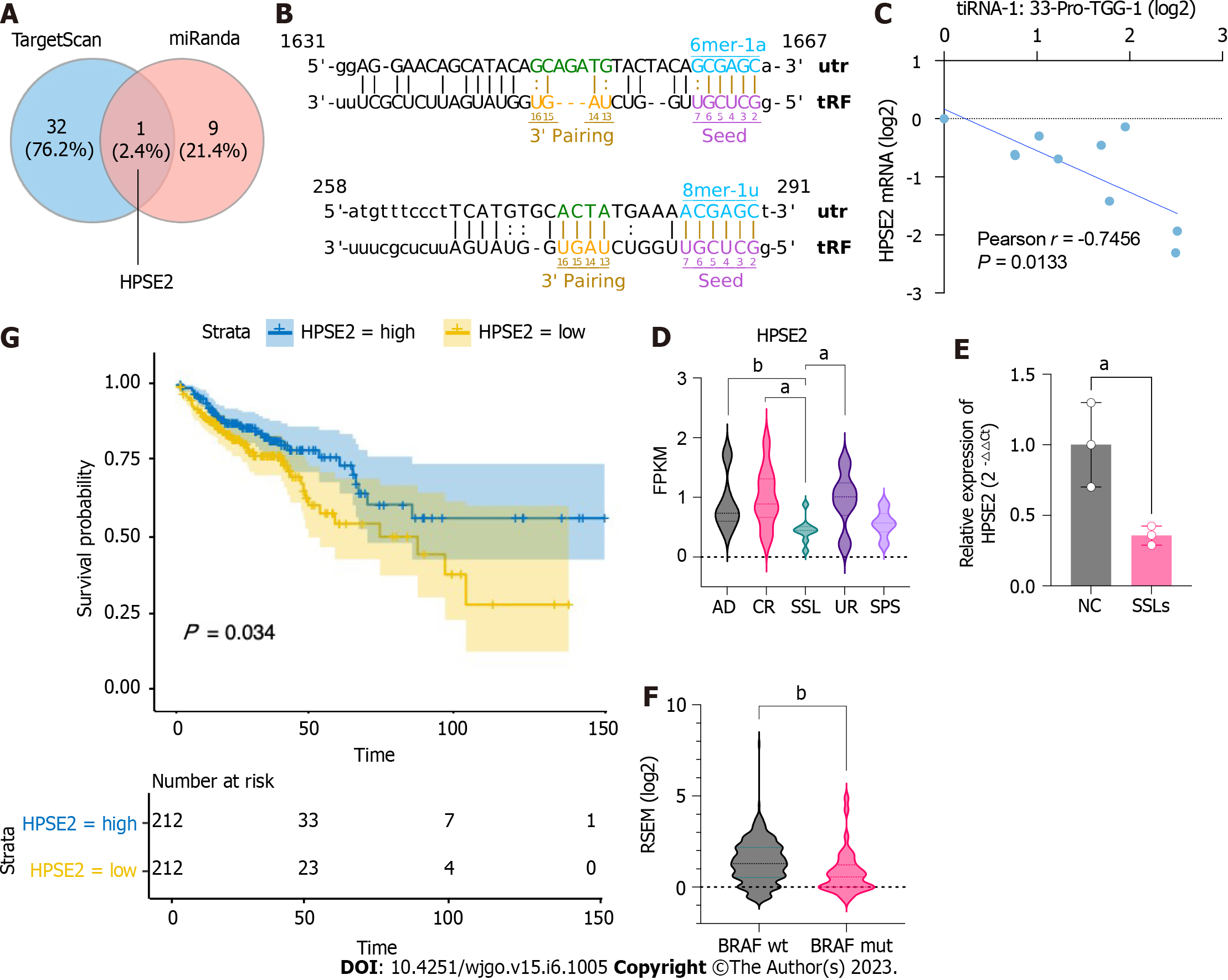Copyright
©The Author(s) 2023.
World J Gastrointest Oncol. Jun 15, 2023; 15(6): 1005-1018
Published online Jun 15, 2023. doi: 10.4251/wjgo.v15.i6.1005
Published online Jun 15, 2023. doi: 10.4251/wjgo.v15.i6.1005
Figure 5 Potential target gene HPSE2 is involved in the serrated pathway.
A: Schematic Venn diagram of transfer RNA halves (5′tiRNA)-Pro-TGG target gene prediction. B: Predicted interaction position between 5′tiRNA-Pro-TGG and 3′UTR of HPSE2. C: Correlation analysis of the expression of 5′tiRNA-Pro-TGG and HPSE2 (n = 10). D: Expression level of HPSE2 in common adenoma, right control colon tissue, sessile serrated lesion (SSL), right uninvolved colon, and serrated polyp syndrome in GSE76987. E: Expression level of HPSE2 in SSLs and normal control (n = 3). F: HPSE2 expression in BRAF-mut colorectal cancer (CRC) was lower in BRAF-wild CRC. G: Kaplan–Meier survival curves for the overall survival (OS) of CRC patients in HPSE2-high and HPSE2-low groups. The OS of patients with HPSE2-low was worse compared to that of patients with HPSE2-high. aP < 0.05, bP < 0.01. AD: Common adenoma; CR: Right control colon tissue; SSL: Sessile serrated lesion; UR: Right uninvolved colon; SPS: Serrated polyp syndrome; OS: Overall survival; CRC: Colorectal cancer; NC: Normal control; tRF: Transfer RNA-related fragment; tiRNA: Transfer RNA halves.
- Citation: Wang XY, Zhou YJ, Chen HY, Chen JN, Chen SS, Chen HM, Li XB. 5’tiRNA-Pro-TGG, a novel tRNA halve, promotes oncogenesis in sessile serrated lesions and serrated pathway of colorectal cancer. World J Gastrointest Oncol 2023; 15(6): 1005-1018
- URL: https://www.wjgnet.com/1948-5204/full/v15/i6/1005.htm
- DOI: https://dx.doi.org/10.4251/wjgo.v15.i6.1005









